As the church’s vaults crashed to the ground, they opened up a hole in the 19th-century floor.
Now, they are revealing some of their findings, including a human-shaped lead sarcophagus.
The incredible discovery is just one of many found in the complex, dense archeology located under the floor.
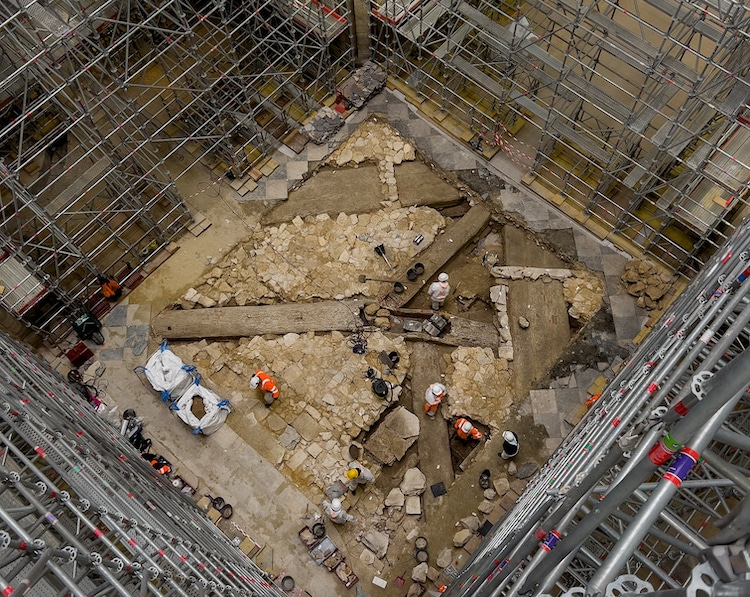
Photo: Denis Gliksman, Inrap
Archeologists also dug up pieces of a lost rood screen that dates to about 1230.
A few remaining pieces can be found in the Louvre.
Now, thanks to the excavation, large chunks of the rood screen have been discovered.
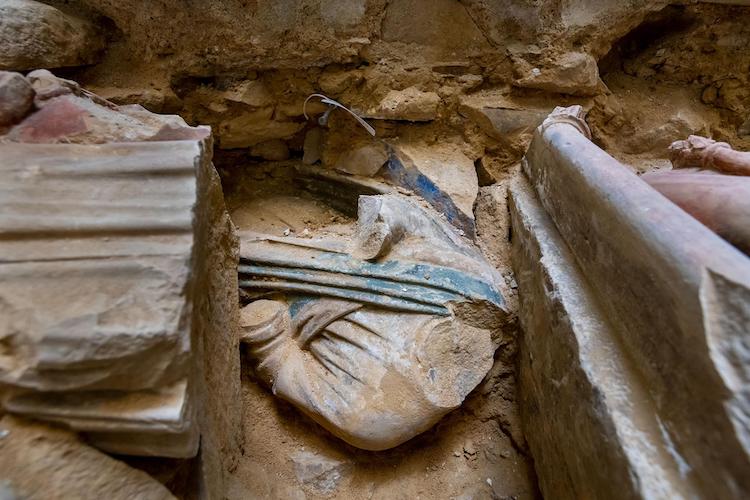
Fragment of rood screen. (Photo: Denis Gliksman, Inrap)
This includes sculpted polychrome figures, as well as architectural elements.
The presence of color distinguishes them from the remains in the Louvre.
In many instances, it’s even possible to see gold leaf.
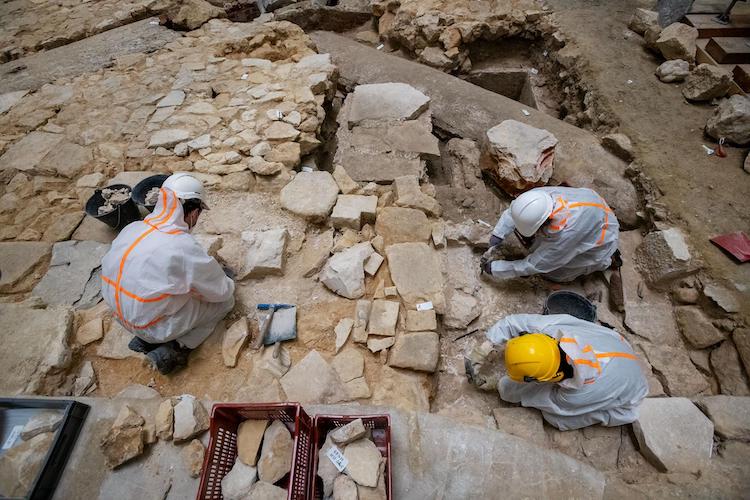
Excavation of rood screen (Photo: Denis Gliksman, Inrap)
Fragment of rood screen.
This time, around 10 plaster sarcophagi were unearthed, one of which included fabric embroidered with gold thread.
But it’s a human-shaped lead sarcophagus that is the most intriguing.
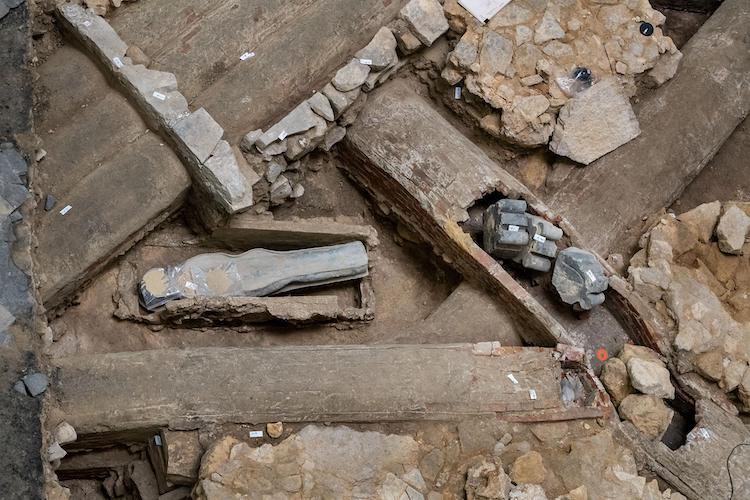
Lead sarcophagus surrounded by 19th-century heating flues. (Photo: Denis Gliksman, Inrap)
While research on the sarcophagus is ongoing, archeologists have already sent a camera inside.
Using this technology, they identified plant remains, textiles, and dry organic matter.
For the past three years, the French National Archeological Institute has been excavating part of Notre-Dame.
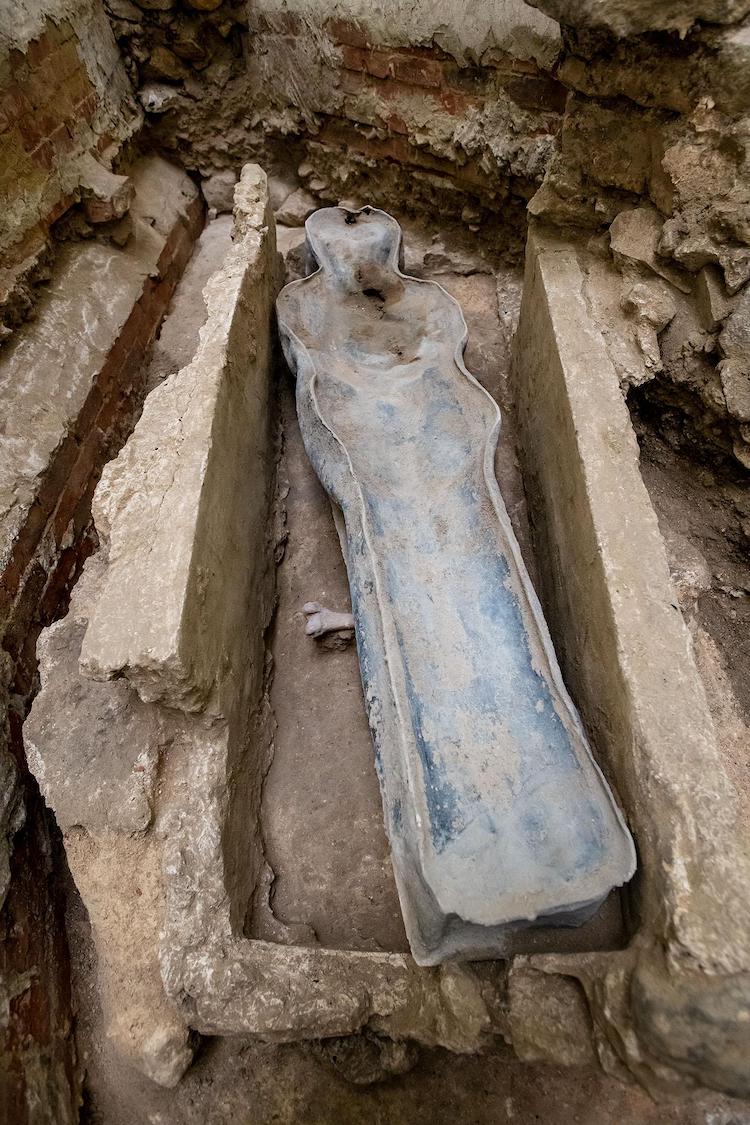
Lead sarcophagus in a masonry tank. (Photo: Denis Gliksman, Inrap)
Lead sarcophagus surrounded by 19th-century heating flues.
Lead sarcophagus in a masonry tank.